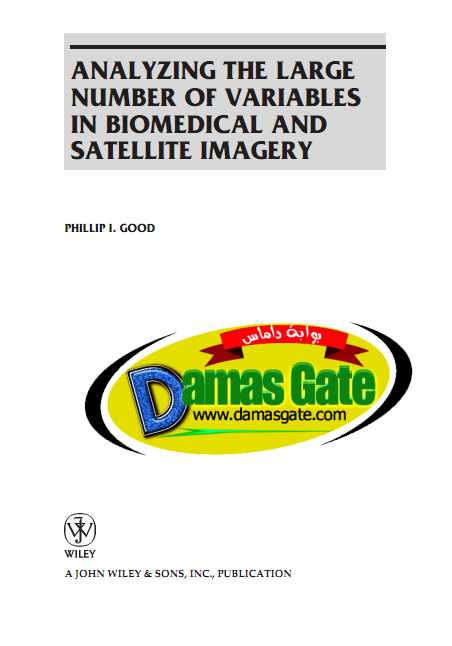Analyzing the Large Number of Variables in Biomeagery Microarrays and Images Good, Phillip I.Author

PREFACE
This text arose from a course I teach for
on the specialized techniques required to analyze the very large
data sets that arise in the study of medical images—EEGs, MEGs,
MRI, fMRI, PET, ultrasound, and X-rays, as well as microarrays
and satellite imagery.
The course participants included both biomedical research
workers and statisticians, and it soon became obvious that while
the one required a more detailed explanation of statistical methods,
the other needed to know a great deal more about the
biological context in which the data was collected.
Toward this end, the present text includes a chapter aimed
at statisticians on the collection and preprocessing of biomedical
data as well as a glossary of biological terminology. For biologists
and physicians whose training in statistics may have been in a
distant past, a glossary of statistical terminology with expanded
definitions is provided.
You’ll find that the chapters in this text are paired for the most
part: An initial chapter that provides a detailed explanation of a
statistical method is followed by one illustrating the application
of the method to real-world data.
As a statistic without the software to make it happen is as
useless as sheet music without an instrument to perform on,
I have included links to the many specialized programs that may
be downloaded from the Internet (in many cases without charge)
as well as a number of program listings. As R is rapidly being
adopted as the universal language for processing very large data
sets, an R primer is also included in an appendix.
PHILLIP I. GOOD
HUNTINGTON BEACH CA
Download
*

PREFACE
This text arose from a course I teach for
on the specialized techniques required to analyze the very large
data sets that arise in the study of medical images—EEGs, MEGs,
MRI, fMRI, PET, ultrasound, and X-rays, as well as microarrays
and satellite imagery.
The course participants included both biomedical research
workers and statisticians, and it soon became obvious that while
the one required a more detailed explanation of statistical methods,
the other needed to know a great deal more about the
biological context in which the data was collected.
Toward this end, the present text includes a chapter aimed
at statisticians on the collection and preprocessing of biomedical
data as well as a glossary of biological terminology. For biologists
and physicians whose training in statistics may have been in a
distant past, a glossary of statistical terminology with expanded
definitions is provided.
You’ll find that the chapters in this text are paired for the most
part: An initial chapter that provides a detailed explanation of a
statistical method is followed by one illustrating the application
of the method to real-world data.
As a statistic without the software to make it happen is as
useless as sheet music without an instrument to perform on,
I have included links to the many specialized programs that may
be downloaded from the Internet (in many cases without charge)
as well as a number of program listings. As R is rapidly being
adopted as the universal language for processing very large data
sets, an R primer is also included in an appendix.
PHILLIP I. GOOD
HUNTINGTON BEACH CA
Download
*